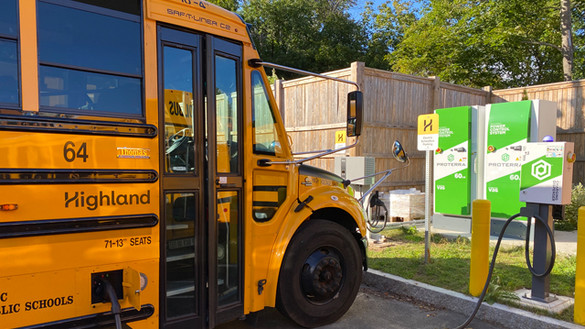
New East Coast Cluster could decarbonise up to half of the UK's industrial cluster emissions
The East Coast Cluster would capture, transport and store CO2 emissions across the Humber and Teesside regions – which together account for nearly 50% of all UK industrial cluster emissions – as well as delivering an average of 25,000 jobs per year in the area up to 2050.
To achieve its target of net zero emissions by 2050, the UK needs to decarbonise industry. Nearly half of carbon emissions from UK industrial clusters come from Britain’s historic engine room: the Humber and Teesside.
What is the East Coast Cluster?
The East Coast Cluster is a collaboration between Northern Endurance Partnership (NEP), Net Zero Teesside and Zero Carbon Humber, with the aim of establishing the world’s first ‘net zero’ carbon industrial cluster in the region.
As part of the UK Government’s Carbon Capture and Storage (CCUS) Cluster Sequencing Process, NEP has recently submitted a bid to develop the common infrastructure needed to transport CO2 from emitters across the Humber and Teesside to secure offshore storage in the Endurance aquifer in the Southern North Sea.
Why is the East Coast Cluster crucial to the UK’s net zero ambitions?
Led by companies that are experienced in delivering ambitious and world-leading projects, the East Coast Cluster represents the single biggest opportunity to decarbonise industry and create a platform for economic growth.
It will therefore play a significant role in supporting the UK’s journey to net zero, as well as establishing a platform to tap into emerging global low-carbon and hydrogen markets.
The UK’s first ‘net zero’ carbon industrial cluster
The East Coast Cluster offers a diverse mix of low-carbon projects, including industrial carbon capture, low-carbon hydrogen production, negative emissions power and power with carbon capture.
…the single biggest opportunity to decarbonise UK industry.
Andy Lane, Managing Director, NEP, said: “The UK needs to decarbonise industry to reach net zero. Nearly half of all carbon emissions from UK industrial clusters come from the Humber and Teesside, making the East Coast Cluster the single biggest opportunity to decarbonise UK industry.”
Establishing net-zero ‘green’ jobs in the Humber and Teesside area
By decarbonising such a substantial part of the country’s industrial heartlands, the project has the potential to support an average of more than 25,000 jobs a year between 2023 and 20501.
Andy Benjamin, Director of CCUS at National Grid Ventures, said: “The East Coast Cluster offers the scale and diversity to protect and create tens of thousands of jobs across the Humber and Teesside for decades to come, while building a solid foundation to re-establish the region as a globally competitive, climate-friendly hub for industry and innovation.”
Ben Houchen, Tees Valley Mayor, also said: “The success of this project is not only crucial for achieving net zero, but also a way of ensuring good-quality, well-paid jobs are supported across Teesside, Darlington and Hartlepool for generations to come.”
Find out more about the East Coast Cluster
1 Research conducted by reputed economics consultancy that led on the Energy Innovation Needs Assessment for BEIS.


